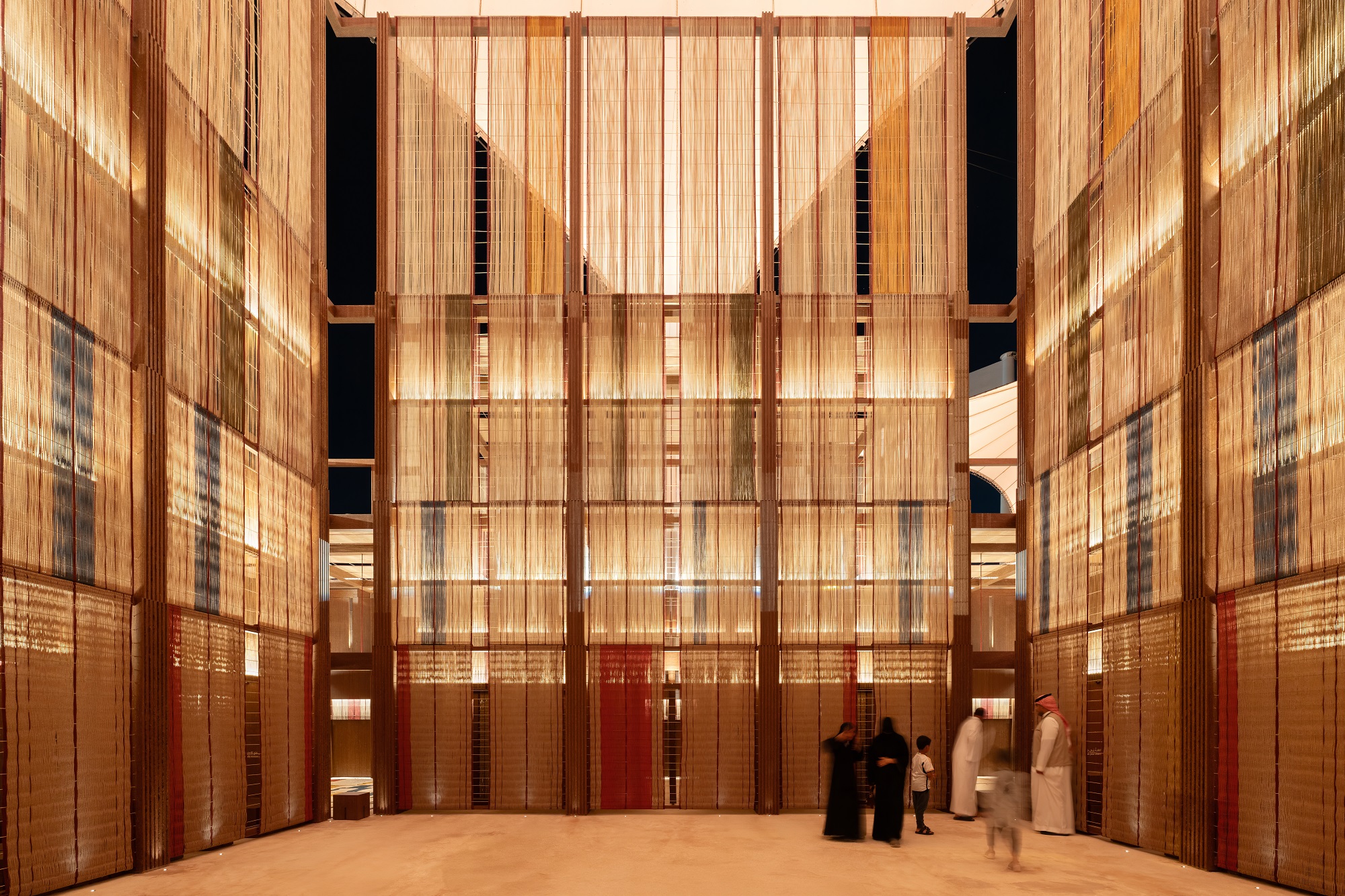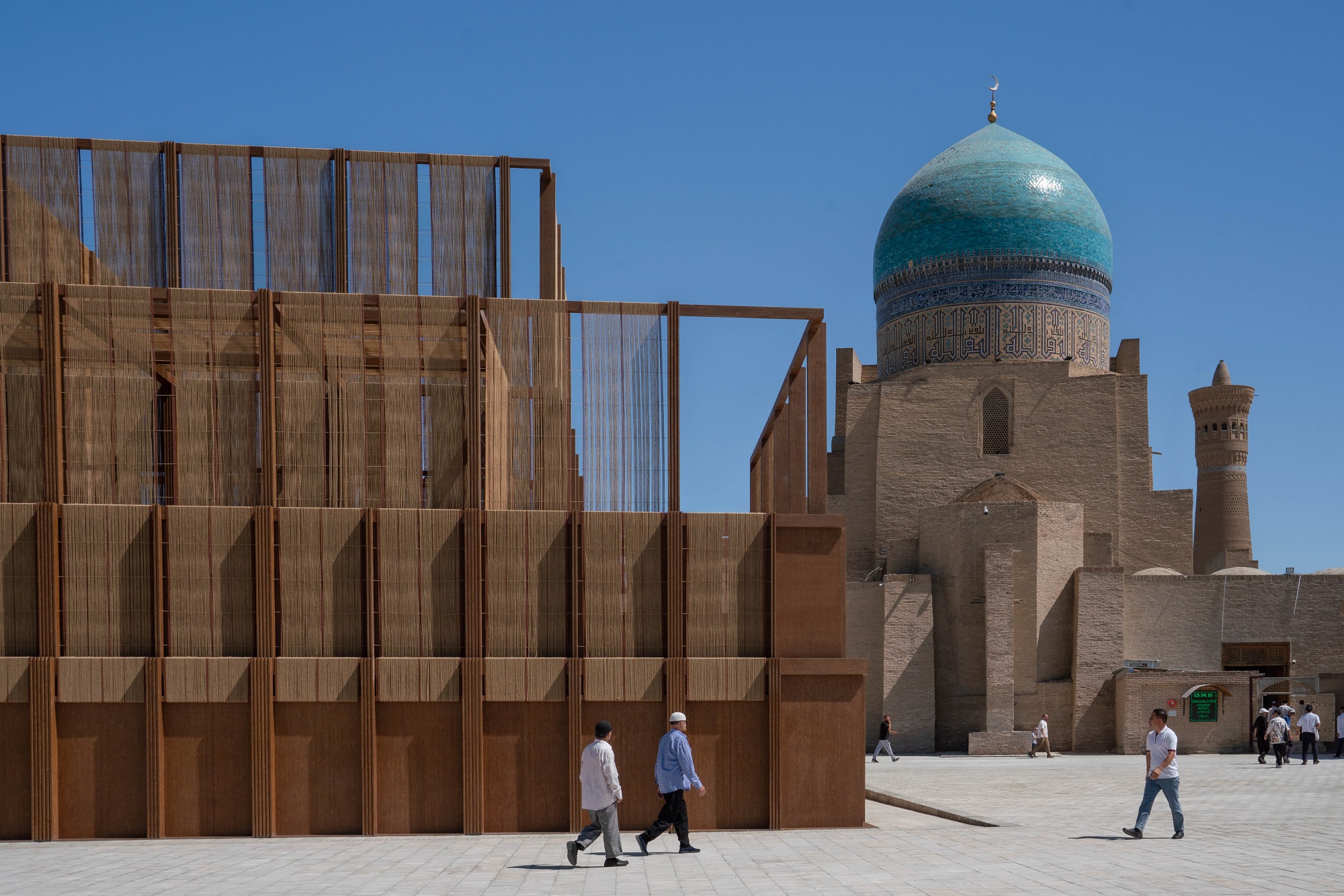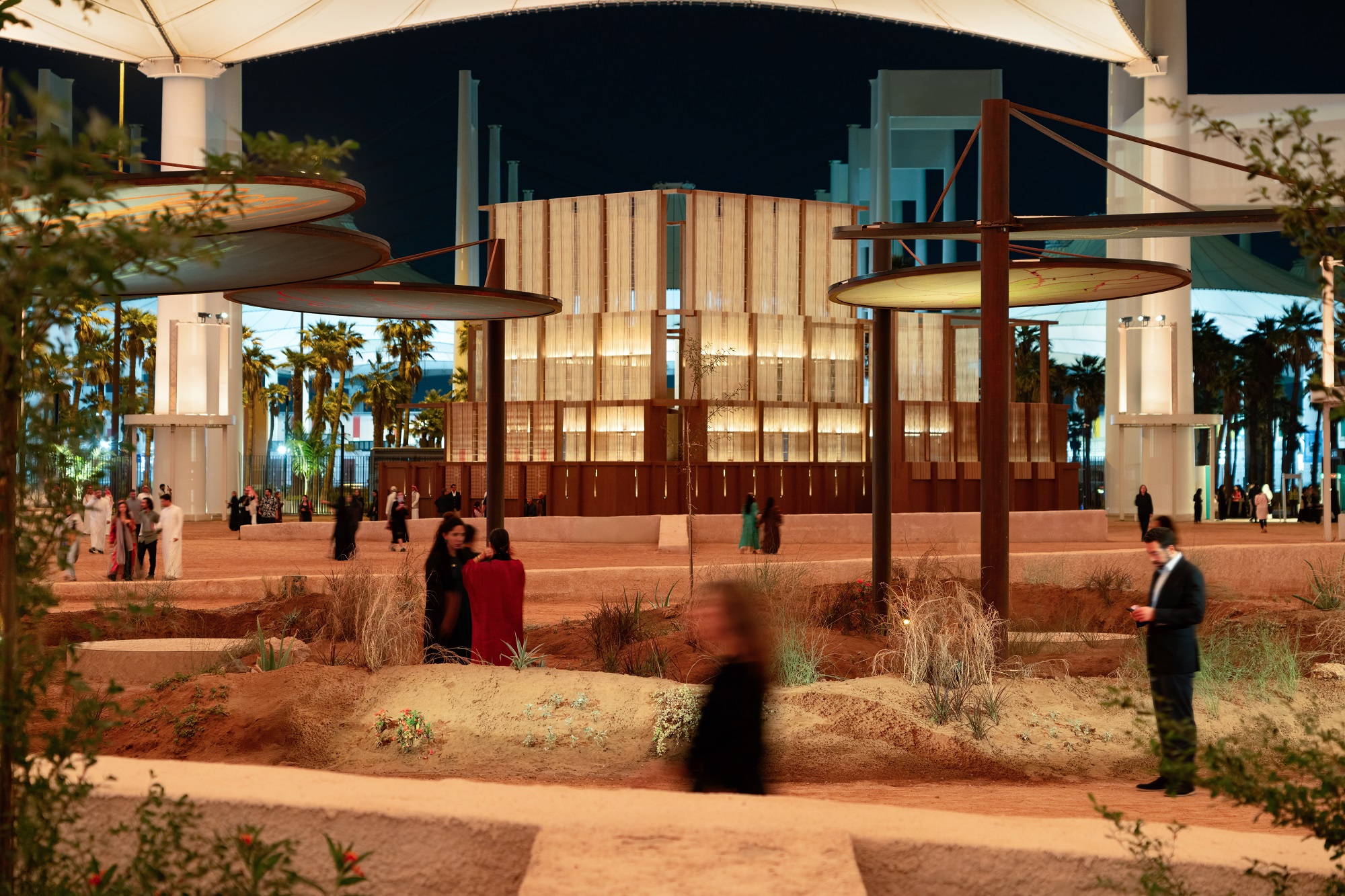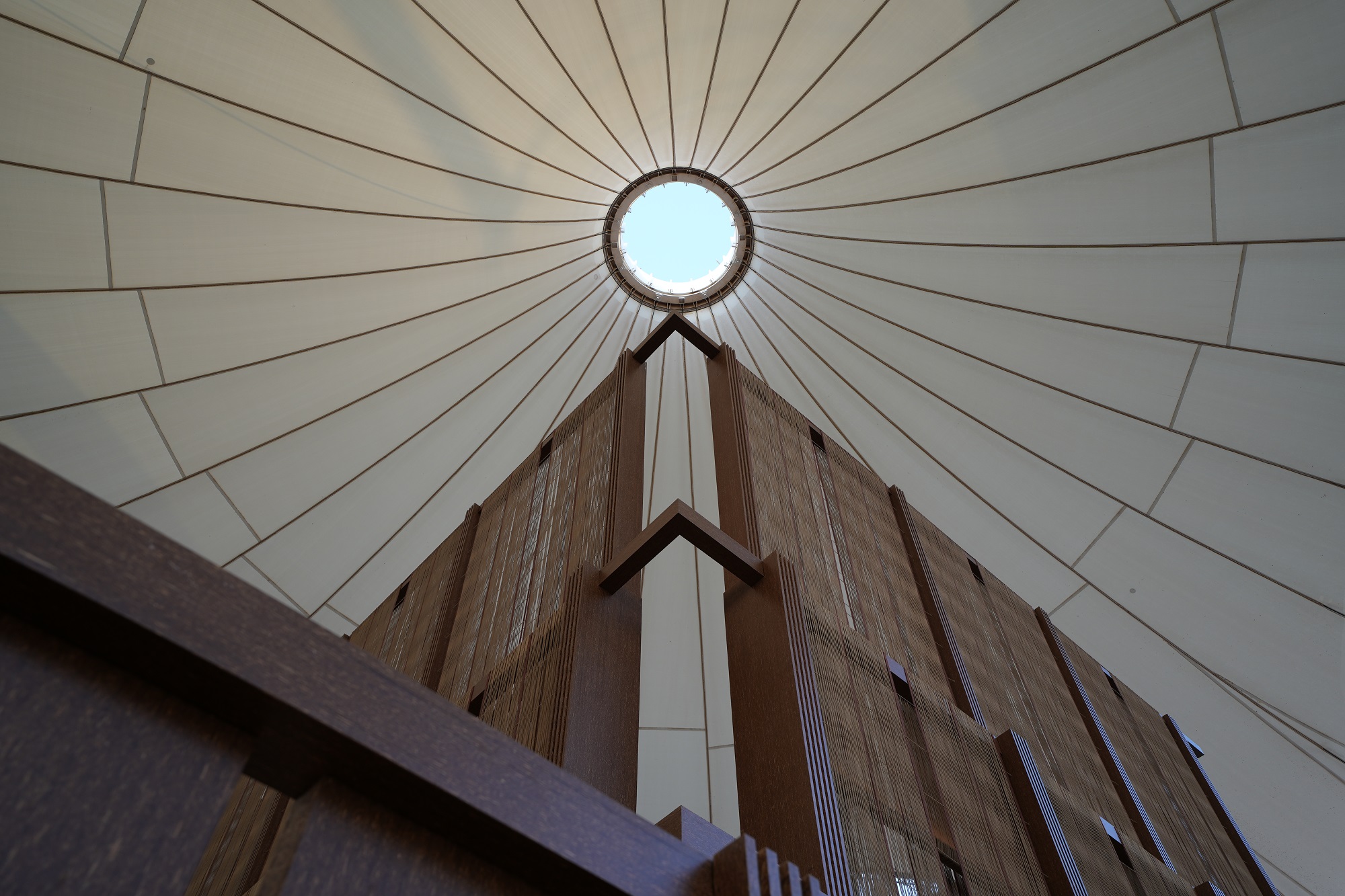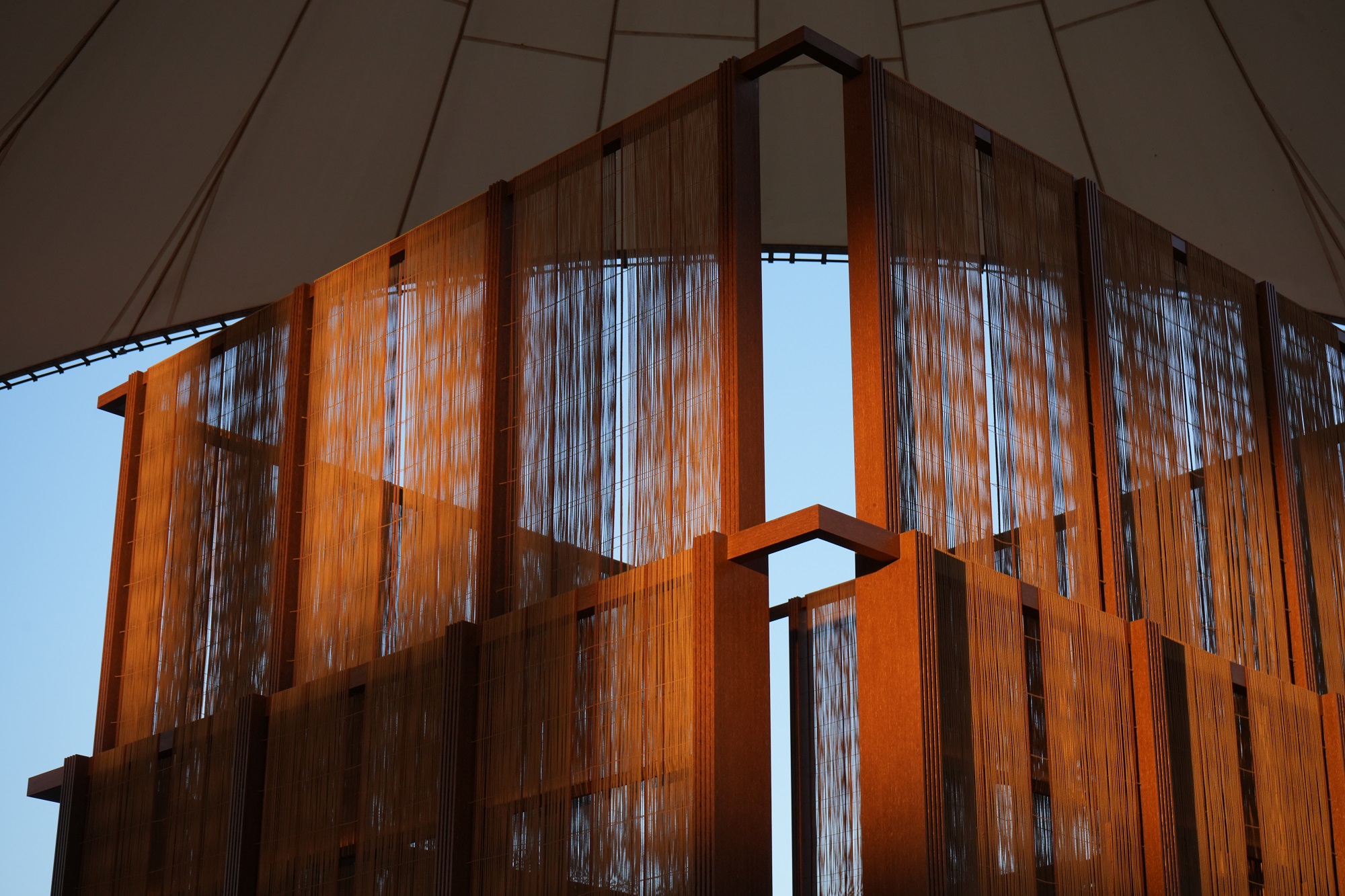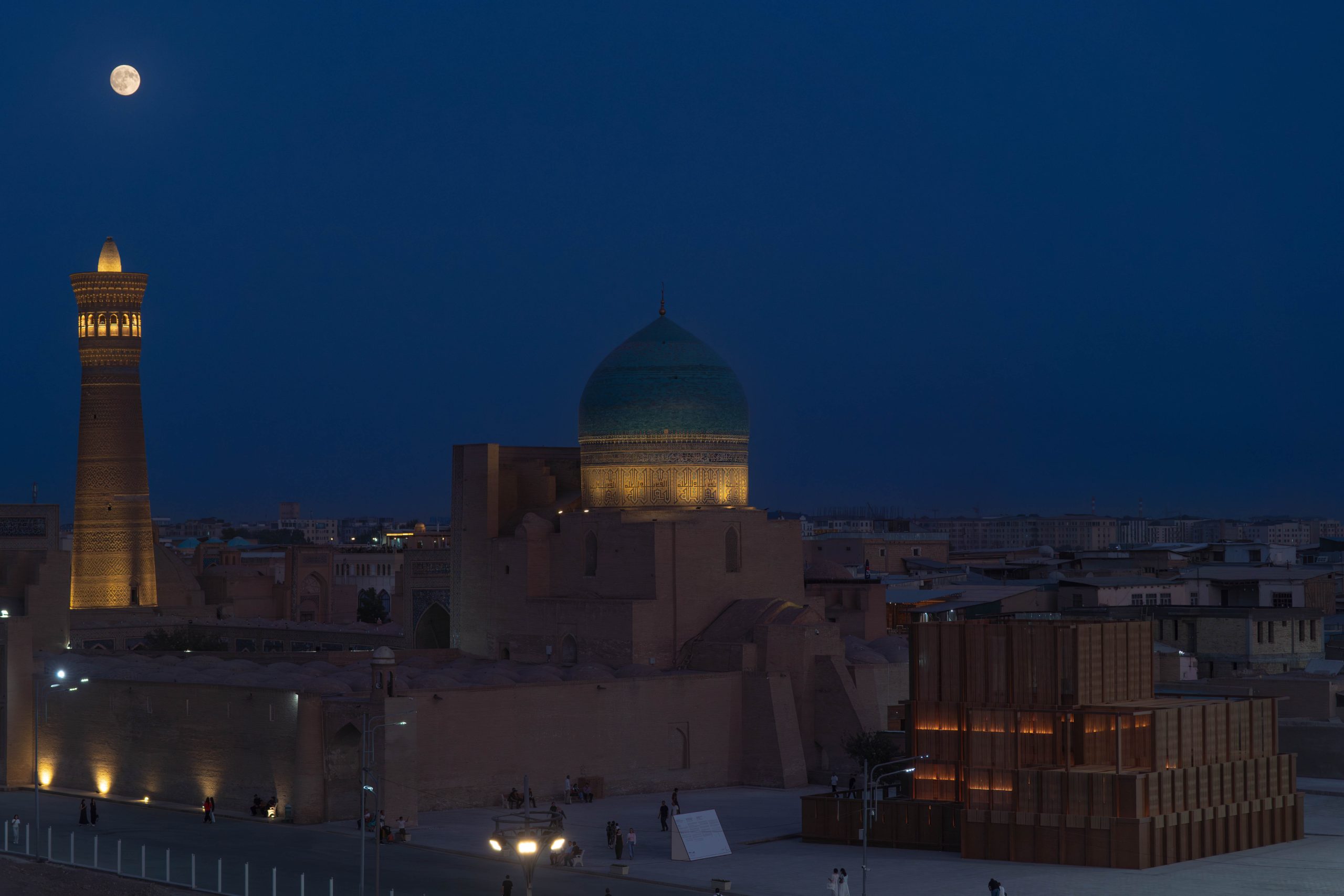The Diriyah Biennale Foundation Brings the Winning Design of the Inaugural AlMusalla Prize to the Bukhara Biennial
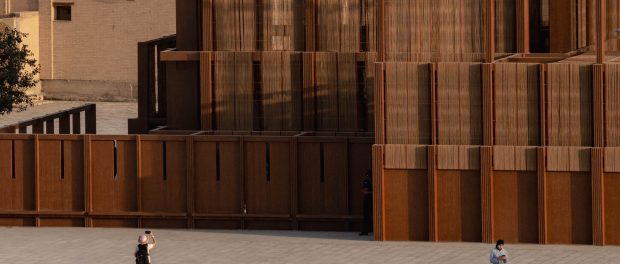 AlMusalla at the Bukhara Biennial, Photo by Sara Saad, Courtesy Diriyah Biennale Foundation
AlMusalla at the Bukhara Biennial, Photo by Sara Saad, Courtesy Diriyah Biennale Foundation
The Diriyah Biennale Foundation brings the winning design of the inaugural edition of the AlMusalla Prize to the Bukhara Biennial, retracing crucial historical connections between Islamic societies in two different regions and giving them new contemporary resonance.
Driven by a strong commitment to Uzbekistan’s development, the musalla’s display in the Bukhara Biennial was made possible thanks to the contribution of Saudi Arabian companies ACWA Power and Vision Invest.
The winning design for the AlMusalla Prize 2025, by EAST Architecture in collaboration with engineering firm AKT II and artist Rayyane Tabet, is almost entirely constructed from palm tree waste that was transformed into a novel building material. The musalla, first installed at the Islamic Arts Biennale 2025 in Jeddah, draws from vernacular practices from Saudi Arabia for a design that offers a flexible space for prayer and gathering.
The design addresses togetherness and proximity, core dimensions of prayer in Islam. It is inspired by how craftsmanship and spirituality come together in weaving, consisting of an open central courtyard and prayer spaces that form a structure that resembles a loom.
In its move to Bukhara, the musalla embraces a new setting that has important common ground with its original context in Jeddah. Jeddah and Bukhara are both defined by their histories of openness to ideas and cultures from near and far. As a port city on the Red Sea, Jeddah is the point of entry for pilgrims traveling to the holy cities of Makkah and Madinah. It has hosted Muslims from around the world, who have contributed to the city’s unique, welcoming culture.
Bukhara was a leading seat of learning along the Silk Road, an incubator of theology, science, art, architecture, and commerce for over one thousand years.
The musalla’s journey between the two cities renews a deep connection between Islamic cultures and uses the presence of two international art exhibitions to propose a view of globalism centered on West and Central Asia.
This carries out the ambition of the AlMusalla Prize to bridge Islamic architectural heritage with contemporary design and sustainability. With its presence in Bukhara, the musalla illustrates a living tradition that is multifaceted and shaped by many influences, just like the history of Islamic societies around the world.
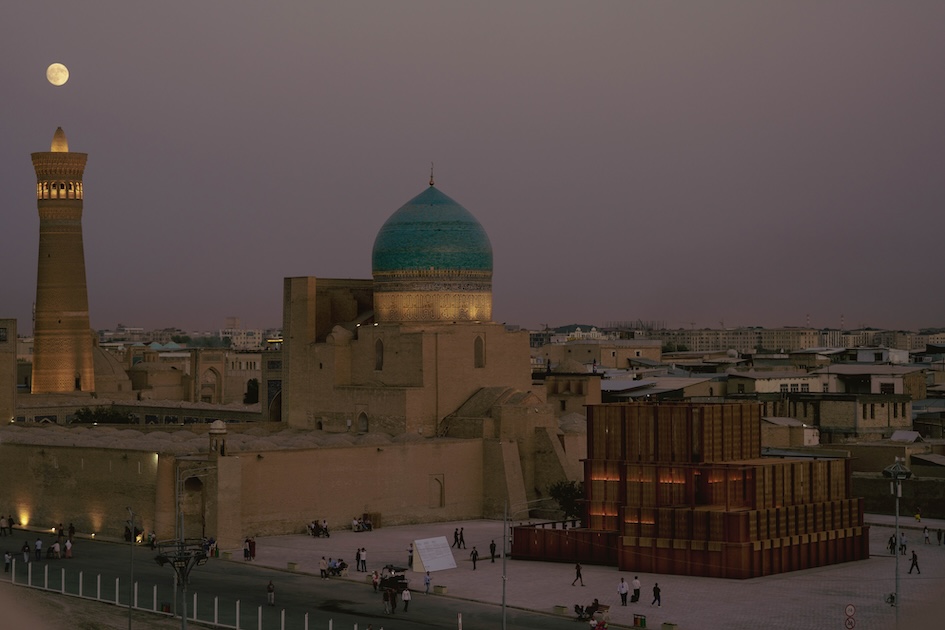
The AlMusalla at the Bukhara Biennial, photo by Sara Saad, courtesy of the Diriyah Biennale Foundation
Prince Nawaf Bin Ayyaf, chair of the AlMusalla Prize: “I am thrilled to see the winning design of the inaugural edition of the AlMusalla Prize travel to Bukhara. The competition brief called for a versatile, adaptable and modular space for prayer that welcomes Muslims and non-Muslims alike, and the fact that the musalla is now taking root in an entirely new context demonstrates these qualities.
Islamic cultures have always been shaped by movement and openness to different influences, and the architectural heritage of Muslim societies demonstrates this fact. The musalla architectural typology in particular draws attention to the transient nature of temporary prayer spaces in Islamic societies, and I am thrilled that the project developed by EAST Architecture, AKT II, and Rayyane Tabet is embodying a new chapter in a living architectural tradition.”
Aya Al-Bakree, CEO of the Diriyah Biennale Foundation: “I am proud to see the AlMusalla Prize continue its life at the Bukhara Biennial. The musalla’s presence in Bukhara establishes a new connection across cultures in Saudi Arabia and Uzbekistan that draws on centuries of history with remarkable points of contact and shared influence.
Making this connection has relied on close collaboration between the Diriyah Biennale Foundation and the Uzbekistan Art and Culture Development Foundation, two institutions with a common goal of fostering contemporary creation and supporting the preservation of heritage and history. It gives me great pleasure to participate in this shared mission.”
Mr. Mohammad Abunayyan, Founder and Chairman of ACWA Power, said: “ACWA Power has always seen itself as more than an energy company — we are a partner in shaping a shared future rooted in creativity and innovation. In this spirit, we are delighted to partner with the Diriyah Biennale Foundation to take part in the Bukhara Biennial — one of the largest and most diverse artistic initiatives in Central Asia. Our support for this cultural platform reflects our belief that ACWA Power’s impact extends beyond energy to encompass creativity, heritage, and culture.
Driven by a strong commitment to Uzbekistan’s development, we have made remarkable progress by offering world-class training programs for Uzbek youth through Shirin College, which ACWA Power supports. Today, the college has become a vital part of Uzbekistan’s social infrastructure. Uzbekistan is the largest market in ACWA Power’s investment portfolio outside the Kingdom of Saudi Arabia, and we are proud of the pivotal role we play in supporting the government’s vision to position the country among the global leaders in energy transition. We take great pride in this mission, which is firmly rooted in the strong bonds of cooperation between the Kingdom of Saudi Arabia and the Republic of Uzbekistan, under the wise leadership of both nations.”
Further commenting on Vision Invest’s involvement, Omar N. Al-Midani, President and CEO of Vision Invest, outlined: “As Vision Invest, we are proud to be supporting this important collaboration between the Diriyah Biennale Foundation and the Bukhara Biennial to showcase the award-winning musalla. This is a testament to the close cultural ties between the Kingdom of Saudi Arabia and the Republic of Uzbekistan.”
The inaugural edition of the Bukhara Biennial is titled Recipes for Broken Hearts and is curated by Artistic Director Diana Campbell, with Wael Al Awar as Creative Director of Architecture, and commissioned by the Uzbekistan Art and Culture Development Foundation. The curatorial concept and title of the biennial’s first edition takes the form of an expanded feast to explore the healing power of art and culture through communal participation and looks at time as a key ingredient in art, cooking, and healing.
The Bukhara Biennial is part of a long-term process of revitalizing some of the extraordinary sites that were essential to developing the culture of Bukhara today. It will be the first event to take place in a renewed historic district in the city, which is undergoing a major conservation and revitalization project led by architect Wael Al Awar of design studio waiwai, with landscape design by VOGT Landscape Architects.
The inaugural edition of the Bukhara Biennial is on view from September 5 through November 20, 2025.

